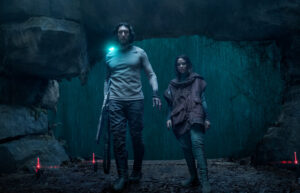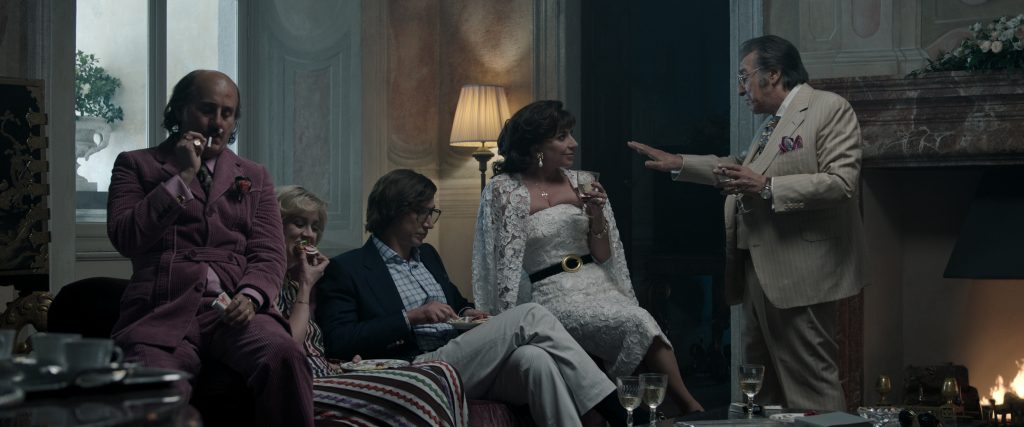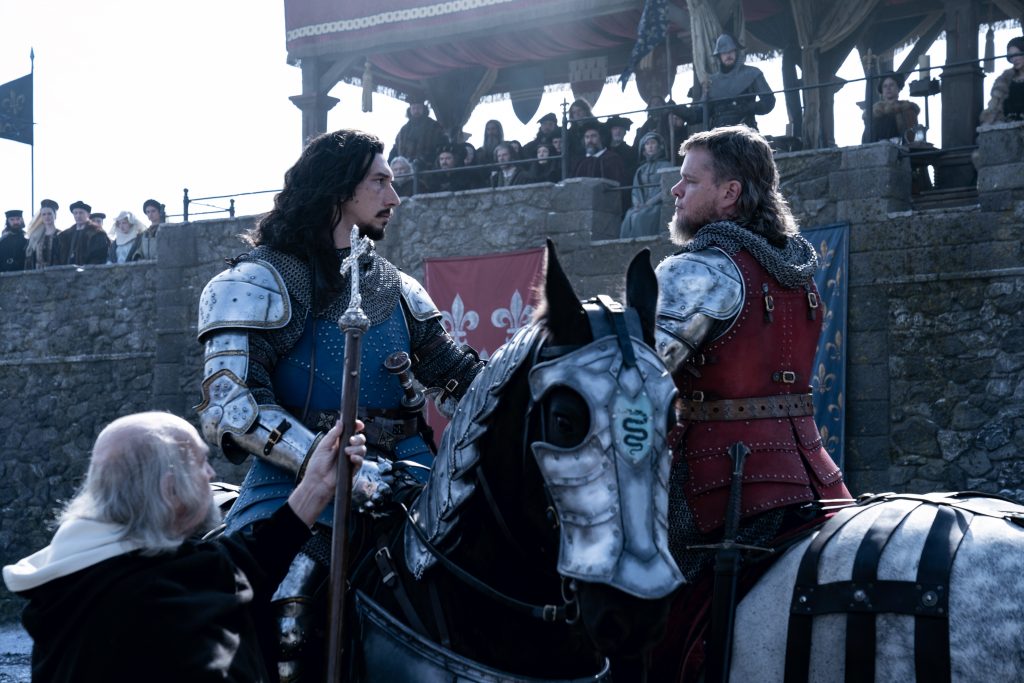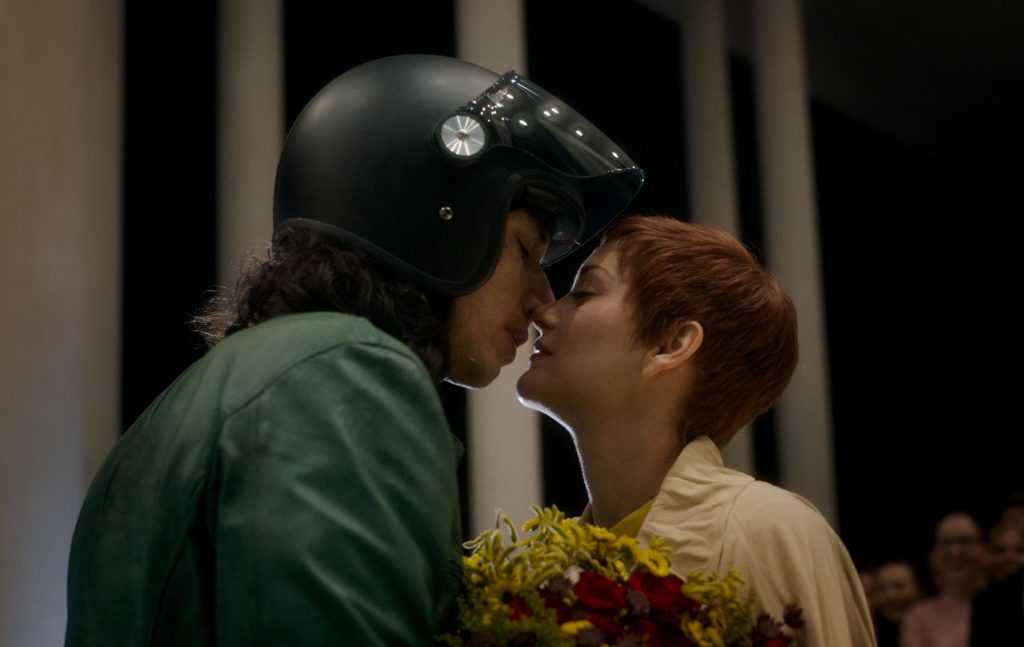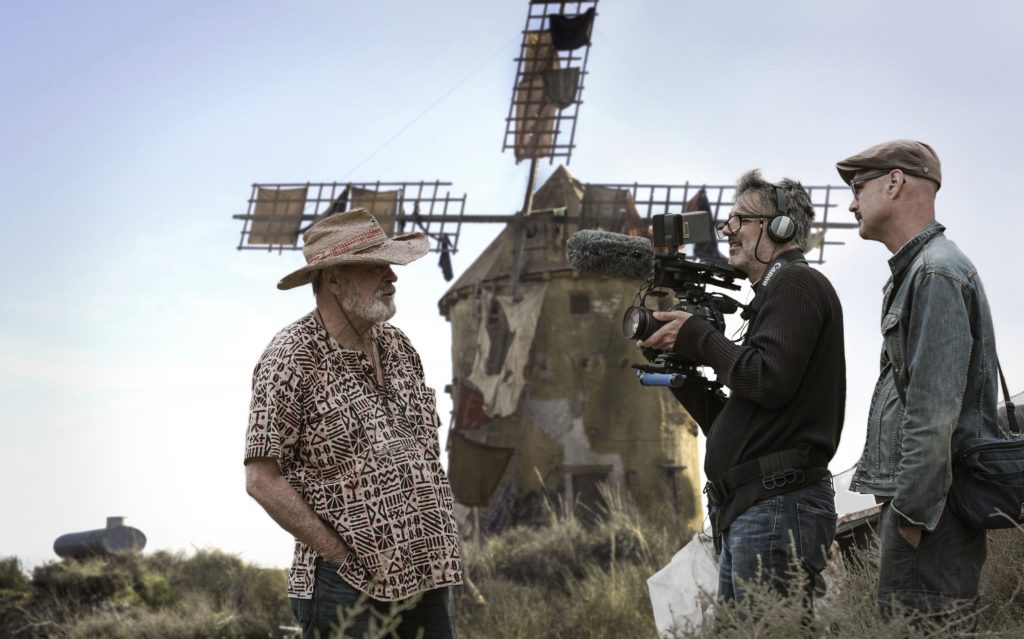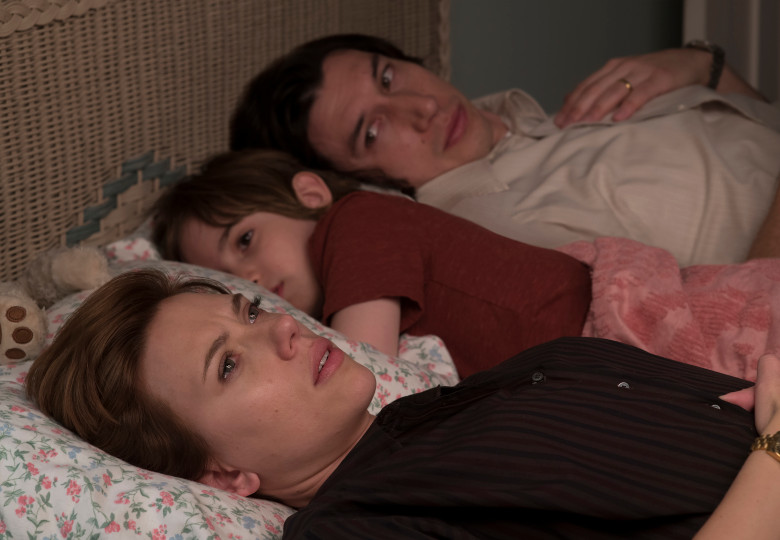October 14, 2023
by Carla Hay

Directed by Michael Mann
Some language in Italian with subtitles
Culture Representation: Taking place in Italy, in 1957, the dramatic film “Ferrari” (based on the non-fiction book “Enzo Ferrari: The Man, the Cars, the Races”) features an all-white cast of characters portraying the working-class, middle-class and wealthy.
Culture Clash: Enzo Ferrari deals with various challenges in his career and personal life, including financial problems for his family-owned Ferrari car company and juggling his volatile marriage to his wife with his other family that he has with his mistress.
Culture Audience: “Ferrari” will appeal primarily to people who are fans of the movie’s headliners and biographical dramas about powerful people.

“Ferrari” goes down many familiar roads that biopics take when they’re about egotistical business moguls with messy personal lives. Adam Driver gives a capable performance as Enzo Ferrari. The movie fares better on a technical level than an emotional level. Some of the movie’s scenes look authentic, while other scenes look overly contrived for drama’s sake.
Directed by Michael Mann and written by Troy Kennedy Martin, “Ferrari” is based on Brock Yates’ 1991 non-fiction book “Enzo Ferrari: The Man, the Cars, the Races.” In the “Ferrari” movie, the story is condensed to the year 1957, when Enzo Ferrari was going through various crises and challenges. “Ferrari” had its world premiere at the 2023 Venice International Film Festival and its North American premiere at the 2023 New York Film Festival.
“Ferrari” begins by showing black and white footage of Enzo as a young man in a racing car. The movie then abruptly jumps to 1957. Enzo is now 59 years old and leading a double life that will put his marriage in jeopardy. Enzo wakes up in bed next to his mistress Lina Lardi (played by Shailene Woodley), who has a semi-secret son with him named Piero.
It’s morning, and Enzo rushes out of the house to drive quickly back to the home that he shares with his fiery-tempered wife Laura Ferrari (played by Penélope Cruz), who is very angry because she knows that Enzo has spent the night with another woman. Laura won’t find out how serious this extramarital affair is until much later. And this revelation will affect her decision on what to do about her marriage to Enzo.
After Enzo arrives at his marital home, Laura then proceeds to shoot a pistol at Enzo, with the bullet hitting a wall near his head. In her rage, Laura reminds Enzo that they had an agreement: He could spend the night wherever he wants, as long as he gets home in time before the couple’s maid brings the morning coffee. The maid has already arrived.
If the maid didn’t suspect that Enzo is having an extramarital affair, she now knows because she is in the room to witness Laura’s ranting. For the rest of the movie, it’s a tug of war between Enzo and Laura over not only their marriage but also control of the Ferrari car empire. Laura has an ownership stake in the company. And she gave a lot of company’s first investment money when it was a fledgling business.
Laura and Enzo have other problems in their marriage besides his infidelity. Their relationship has never been the same, ever since the death of their son Alfredo Ferrari, who died of kidney failure in 1956, at the age of 24. Enzo and Laura are grieving in different ways.
Enzo has poured a lot of his energy into his work to the point where he’s a workaholic who has neglected his marriage. His emotional state is often cold and distant, as if it’s too painful to feel his grief, so he shuts himself off from his emotions. Laura is the opposite: Her grief has consumed her to the point where her emotions are out of control. She lashes out mostly at Enzo, but other people are also the targets of her bad temper.
Enzo’s mother (played by Agnese Brighittini), who doesn’t have a name in the movie, is an opionionated and influential force in Enzo’s life. (In real life, the first name of Enzo’s mother was Adalgisa.) However, Laura fights to maintain her status as the most important woman in Enzo’s life, even if their marriage is breaking down.
“Ferrari” also shows that in 1957, the Ferrari company is spending more money than it is making. Enzo is advised to increase production from 98 different models of Ferraris to more than 400 different models. Ferrari wants to invest more heavily in a different strategy: Win as many high-profile automobile races as possible with racers who will drive Ferraris. The publicity generated from these victories would be expected to boost sales of Ferraris.
Although there are several talented racers who are part of the Ferrari team, one in particular is Enzo’s biggest hope to take the Ferrari brand to a new level on the racing circuit: Alfonso De Portago (played by Gabriel Leone), a Spanish aristocrat/playboy, is seen by Enzo as a rising star who could take the Ferrari brand to new heights. Alfonso is one of the competitors in the treacherous 1957 Mille Miglia race. Piero Taruffi (played by Patrick Dempsey) is an Italian racer who is also competing in the 1957 Mille Miglia race. Peter Collins (played by Jack O’Connell) is a British racer who joined the Ferrari team in 1956. These two characters have supporting roles that aren’t as developed as the character of Alfonso.
In this male-dominated movie, the women with significant speaking roles are usually relegated to the role of wife, girlfriend, mother or employee. Laura is the only female character in the movie who is presented as being involved in business deals. Two of the female characters who appear briefly in “Ferrari” are Cecilia Manzini (played by Valentina Bellè) and actress Linda Christian (played by Sarah Gadon), who are in the movie with “girlfriend” roles. Cecilia is the fiancée of race car driver Eugenio Castellotti (played by Marino Franchitti), and she is a character based on real-life ballerina/actress Delia Scala, who was engaged to the real Castellotti at the time. In real life, as depicted in the “Ferrari” movie, Christian was dating De Portago at the time.
“Ferrari” alternates between Enzo’s worries in his business life and his problems in his love life. Eventually both sets of problems collide when Laura raises the stakes on what she might or might not do about her share of the Ferrari business ownership. Enzo is also facing allegations of Ferrari having faulty cars when one of the Ferrari cars is involved in a fatal accident during a car race.
People who want to see adrenaline-pumping car racing scenes won’t be disappointed in “Ferrari,” because these scenes are among the best in the movie. The direction and cinematography for these scenes give viewers the feeling of being fully immersed in the action. When tragedy strikes during a racing scene, the graphic way in which it is depicted can affect viewers of “Ferrari” on a visceral level.
“Ferarri” stumbles in depicting the love triangle between Enzo, Laura and Lina. Cruz (who is Spanish in real life) does a very convincing portrayal as an Italian and is the movie’s scene stealer. Unfortunately, American actress Woodley is not very believable as an Italian. The Lina character is also underdeveloped. Driver, who is American, is somewhere in between: He’s neither great nor terrible in the role of Enzo. “Ferrari” is ultimately a movie that can appeal to different types of people, even if there’s a lot in the movie that feels like the same old story.
Neon will release “Ferrari” in U.S. cinemas on December 25, 2023. UPDATE: The movie will be released on digital and VOD on January 23, 2024. “Ferrari” will be released on Blu-ray and DVD on March 12, 2024.

